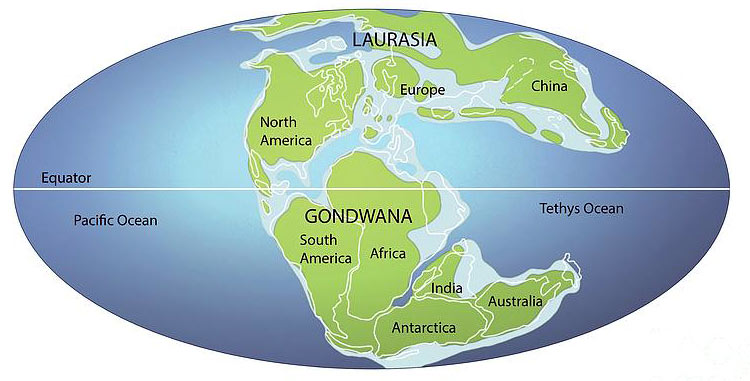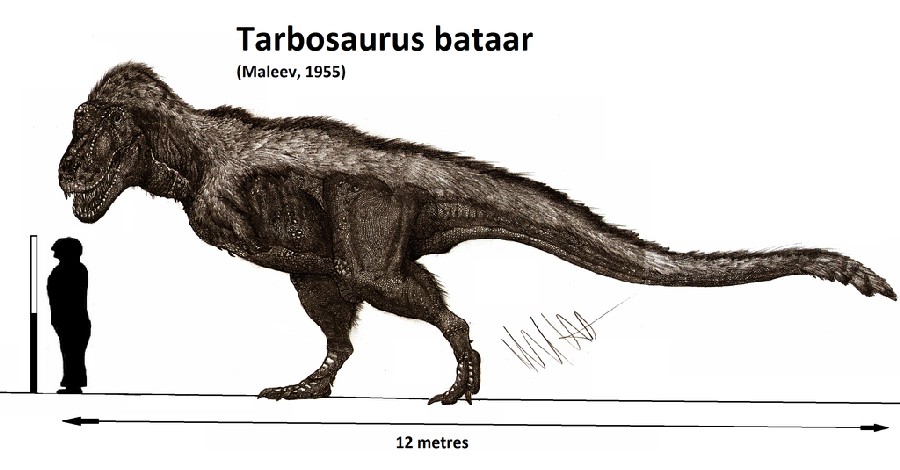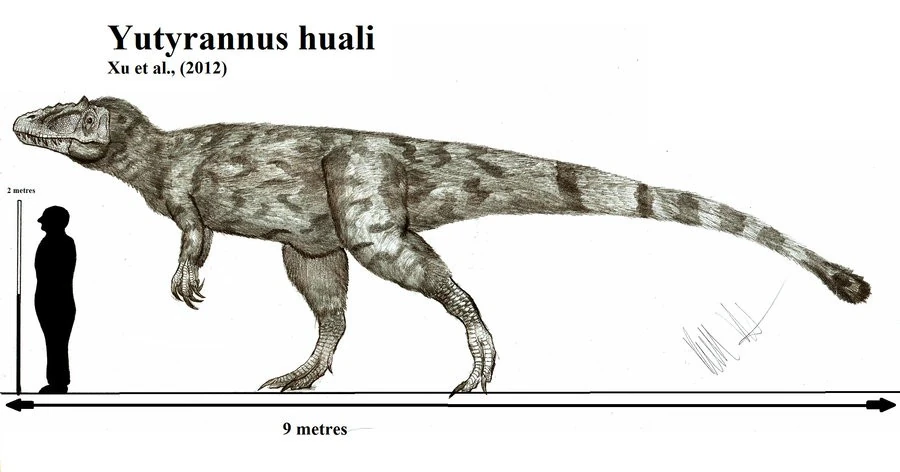Dueling Dinosaurs: Bloody Mary
- kgreg31
- 10 hours ago
- 6 min read
One of the most groundbreaking discoveries has happened in paleontology, reshaping all previous literature regarding Tyrannosaurids, providing near irrefutable evidence to the existence of a new dinosaur, the Nanotyrannus.
![[from North Carolina Museum of Natural History]](https://static.wixstatic.com/media/0941ec_9135d1e3e9e24db5a29e841fd44eddf8~mv2.jpg/v1/fill/w_800,h_600,al_c,q_85,enc_avif,quality_auto/0941ec_9135d1e3e9e24db5a29e841fd44eddf8~mv2.jpg)
Tyrannosauroidea is the superfamily of large carnivorous theropod dinosaurs that existed in the time between the Jurassic up until the end of the Cretaceous period, which is from 200-65 million years ago. This superfamily of dinosaurs includes the most well-known and, above all else, the most widely studied dinosaur of all time, the Tyrannosaurus Rex, or T. rex. Based on all the current data in paleontology, the T.rex is definitely the biggest terrestrial carnivore to ever exist on Earth, ranging from 7 to 9 metric tons (15,000-20,000lbs), but I don’t think that many understand the sheer magnitude of this beast that was the apex predator of the Cretaceous. Fortunately enough, I live next to the Chicago Field Museum, which has one of the biggest nearly complete skeletons of a Tyrannosaurus Rex, nicknamed 'Sue", which I saw with my family last year.
[original pictures by me!]
With serrated teeth that could reach up to a foot in length that more resembled armor piercing bullets made for tanks than actual teeth that could be found on a real animal, these specialized railroad spikes were the perfect for breaking bones and piercing the thick armor of large herbivores like Triceratops or Ankylosaurus. The only dinosaurs that Tyrannosaurus Rex couldn’t hunt were large sauropods like Alamosaurus, which was a gigantic herbivore that weighed from 30-80 metric tons and was as tall as a four-story building, outclassing any carnivorous dinosaur of the time by sheer size alone.
[from Wikipedia, Reddit, & Sauropod Vertebrate Pictures]
Now, in order to actually get into the topic that paleontologists have been debating that I initially mentioned, we first need to understand the origins of the Tyrannosaurus Rex. The overarching term Tyrannosaroidae, which I previously explained, covers the large superfamily of these large bipedal theropods from the Jurassic to the Cretaceous period. The problem with just identifying these animals as one large supergroup is that they existed on earth for over 100 million years, in which large geographical changes happened to the planet, and thus Tyrannosaroids evolved differently to occupy different niches in the changing ecosystems. The earliest Tyrannosauroids, like Proceratosaurus, were found to exist during the mid Jurassic period on the supercontinent Laurasia, which is when what is now known as North America and Asia were one large connected landmass. This explains the existence of other Tyrannosauroid fossils like Tarbosaurus and Yutyrannus being found in places China and Mongolia. A fun fact about Yutyrannus is that it is the only Tryannosauroid fossil found to have a full coat of feathers. However these separate species of Tyrannosauroids were apex predators in their respective regions and time periods, the largest of all the different species, Tyrannosaurus Rex, which is exclusively found in North America, was only found to exist during the late Cretaceous period.
[from Prehistoric Life Wiki, The Dinosaur Database, and DinoAnimals]
Now you may be asking yourself, how the hell do people even know all this ridiculous sh*t about animals that existed millions of years ago just from a bunch of rocks? The most reliable information about creatures from the late Cretaceous period comes from a large rock formation that stretches across Montana, North Dakota, South Dakota, and Wyoming. The Hell Creek formation is one of the most intensely studied areas of paleontology, and where the most well-known dinosaurs from movies and TV shows were found. With the multitude of pristine fossils from the late Cretaceous period found in this region, paleontologists could accurately piece together the fauna of the region for this particular time period, leading them to hypothesize the different roles that certain animals played in the food chain.
[from Wikipedia and University of California, Museum of Paleontology]
Okay so now that I’ve said a whole bunch of information as a precursory information about Tyyannosauroids, it’s time to dive into the issue at hand, which is the existence of the Nanotyrannus. The very first appearance of the Nannotyrannus was when in 1942, a skull of what appeared to be a smaller Tyrannosauruoid was dug up by paleontologists from the Cleveland Museum of Natural History, but was originally classified as a new species of Gorgosaurus (gorgosaurus lancencis), which is a distant cousin to the T. rex. It was only later, in 1988, that three paleontologists, Bakker, Currie, and Williams, proposed the idea that this was a different species of dinosaur outside the genus of Tyrannosaurids, but instead a new species, Nanotyrannus.
(Tyrannosaroid is not the same as Tyrannosarid. Tyrannosauroid is an adjective for the super-family of Tyrannosaroidea, which includes more basal relatives, while a Tyrannosarid only consists of certain species under that super-family.)
[from Wikipedia]
However, there was one big problem that made paleontologists scoff at the idea of this being a new dinosaur outside the genus. When they analysed the age of this fossil by checking the growth rings of the bones, they found that the dinosaur was a juvenile at the time of death. So until further fossils were discovered, Nanotyrannus Lancecis was largely considered to be a juvenile T. rex; however, there were some things that were off about it. Due to certain variations in the skull shape and proportions, the consensus was that T.rex undergoes a unique growth cycle where it has 2 stages. The first stage is where it grows to a mid-sized predator at around 10 years old, then a rapid period of exponential growth, where it transforms into a behemoth when reaching full maturity. During the time, fossils found in Hell's Creek had a wide array of small prey to match with small predators, and the T.rex, which was the only apex predator to hunt large prey in the area since it had no competition other than members of its own species. However, there were no mid-sized predators to match the mid-sized prey, so the prevailing theory was that during the first cycle of the T.rex’s life, before it began drastic changes, it was occupying the mid-sized predator role, something that we don’t see in any other vertebrate animal.
![[from Khan Academy]](https://static.wixstatic.com/media/0941ec_7fbdcc8c96524928be20abc1f9c358ab~mv2.jpg/v1/fill/w_960,h_744,al_c,q_85,enc_avif,quality_auto/0941ec_7fbdcc8c96524928be20abc1f9c358ab~mv2.jpg)
Now in 2006 an unbelievably rare fossil was found in Montana that could reshape all of what paleontologists know about the Tyrannosaurus Rex. The fossil known as Dueling Dinosaurs, nicknamed “Bloody Mary,” was of what appeared to be a Triceratops and a miniature Tyrannosauroid, fossilized mid-combat. The only problem was that it was found on private property, and the people who discovered it tried negotiating a price for this fossil with several different museums, but these efforts failed. It wasn’t until after fundraising efforts and long legal disputes that the North Carolina Museum of Natural Sciences acquired the fossil in 2020. Upon studying “Bloody Mary,” it was found that the fossilized Tyrannosaroid was 98% complete, which is almost unprecedented in any large Tyrannosaroid fossil, allowing for precise analysis of the bone structure and proportions.
![[from Wikipedia]](https://static.wixstatic.com/media/0941ec_2aef5f38873048a4958b7ebcd4c412e0~mv2.jpg/v1/fill/w_880,h_441,al_c,q_85,enc_avif,quality_auto/0941ec_2aef5f38873048a4958b7ebcd4c412e0~mv2.jpg)
After an extensive research paper was published on October 30th 2025 by Lindsay Zanno and James Napoli, provided copious amounts of evidence pointing towards the existence of Nanotyrannus. Not only was the specimen a fully grown adult, as shown by the fusing of several growth plates and bone layering, but it also had noticeably bigger arms. Not just proportionally bigger arms relative to an adult T.rex but actually longer length in the bones, along with a missing vestigial bone in the hand that is found in T.rex hands. Another difference that they found was that there was a particular cavity in the skull that the Nanotyrannus had, which is not found in adult T.rex skulls. Not only would this mean that if this were a juvenile T.rex, it would mean that during its second growth phase, it would have to gain a bone in its hand, change its skull shape, and also have its arms shrink as it undergoes maturity.
[from Species New to Science & SciTech Daily]
Now, how does this reshape the current literature surrounding Tyrannosaurids? As previously stated, the prevailing theory was that Tyrannosaurus Rex occupied mid-sized prey and large-sized prey at different stages of their maturation. Now it’s shown that Tyrannosaurus Rex lived alongside Nanotyrannus and possibly other small Tyrannosaroids during the end of the late Cretaceous. This means that there were different evolutionary paths that led their common ancestors to evolve differently over the course of their existence on the North American continent. One of the current theories is that at the end of the Cretaceous period, the West Interior Seaway was a large body of water that split North America into 2 separate landmasses. On one side could have Tyrannosauroids that evolved to be more nimble and fast-paced, while the other side had Tyrannosauroids evolve into ambush predators with a more robust build. Then, during the very end of the Cretaceous period, the West Interior Seaway regressed from the Gulf of Mexico (f*ck the Gulf of America, it's not real). This could have led to the two different species migrating into the same ecosystems and living alongside each other as separate species that were derived from the same common ancestor.
[from Wikipedia]
Even though there is pretty solid evidence the process of proving or disproving certain hypotheses is forever ongoing and there may be certain discoveries that disprove these findings. Regardless of that, it’s still very interesting learning about these ancient creatures, and I hope you found some of this interesting!
_edited.png)






























Comments